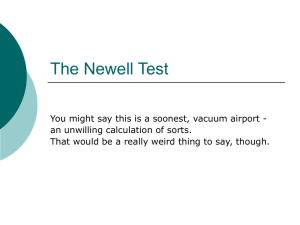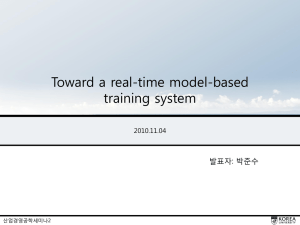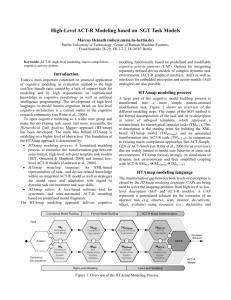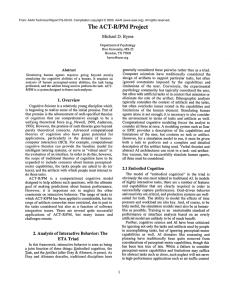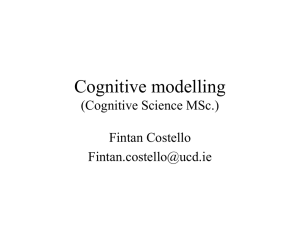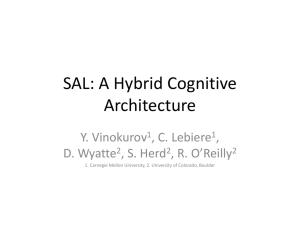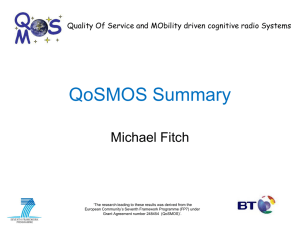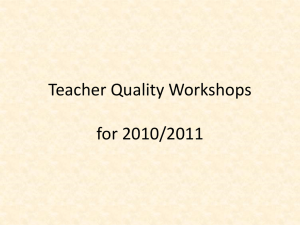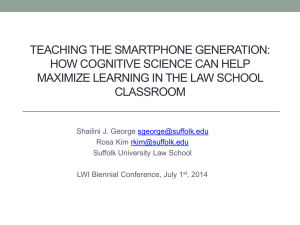ACT-R with a physiological substrate
advertisement
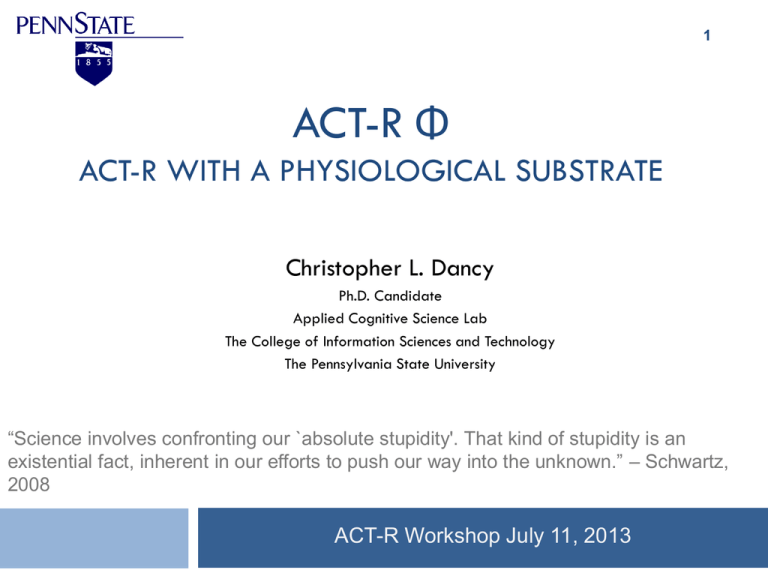
1 ACT-R Φ ACT-R WITH A PHYSIOLOGICAL SUBSTRATE Christopher L. Dancy Ph.D. Candidate Applied Cognitive Science Lab The College of Information Sciences and Technology The Pennsylvania State University “Science involves confronting our `absolute stupidity'. That kind of stupidity is an existential fact, inherent in our efforts to push our way into the unknown.” – Schwartz, 2008 ACT-R Workshop July 11, 2013 Ways Physiology can Modulate Cognition and Behavior (some priming…) 2 Appetitive Motivations1,2 Hunger, Thirst, Thermal Balance, etc. Sleep Stress3 Need to void4 And these all interact!5 1. 2. 3. 4. 5. Panksepp (2012) Mogg et al. (1998) Joëls and Baram (2009) Tuk et al. (2011) Montano et al. (2012) Biology/Physiology in ACT-R 3 Ritter (2007, 2009) – Simulating the effects of stress & caffeine Biology/Physiology in ACT-R 4 Ritter (2007, 2009) – Simulating the effects of stress & caffeine Changed parameters to simulate participants in different groups (challenged, threatened, caffeine) seconds-per-syllable (SYL) base level constant (BLC) activation noise (ANS) Parameter values were found using GA & were static across the task Biology/Physiology in ACT-R 5 Gunzelmann (2009, 2012) - Simulating the effects of Fatigue/Sleep deprevation Biology/Physiology in ACT-R 6 Gunzelmann (2009, 2012) - Simulating the effects of Fatigue/Sleep deprevation Used a model of fatigue (cognitive throughput or alertness) due to sleep deprevation (CNPA) Connected model to DM (activation) and Procedural (utility) Questions from the two examples 7 How can we make cognition change physiology too (and in real-time)? How can we combine results? How can we generalize the results? HumMod1 8 1. Hester et al., 2011 Why HumMod? 9 Integrative model1 Want to avoid “micro” computational models of physiology Top-down organization Provides macroscopic representation of physiology and some underlying functionality Open-source model (XML) Allows verification, validation, and modification (if needed) It’s software that works(!!!) 1. Hester et al., 2011 About HumMod 10 Inputs (parameters) Exogenous e.g. Epinephrine pump, IV drip Modify autonomic nerve activity “Lifestyle” e.g. changes to variables settings - Air supply, Exercise, Diet About HumMod 11 ACT-R 12 1. Anderson et al., 2008 1 ACT-RΦ : An Extension to ACT-R 13 A Modification of a Subtraction Model1,2 14 1. Ritter et al., 2009 2. Dancy et al., Accepted Subtraction model results1 (n=200) 15 1. Dancy et al., Accepted Subtraction model results (n = 1,582,000 OR 2 * 3955 * 200) 16 1. Dancy et al., Accepted Subtraction model results (n=200 * 3955 * 2) 17 1. Dancy et al., Accepted A Thirsty model 18 1. Dancy et al., 2013 Thirsty model Results 19 Re je ct production rule utility S u b je c tiv e Th irs t 10 8 6 4 2 0 -1.5 - 1 .0 -0 .5 0 .0 A c c e p t U tility Decision Acceptexperiment Acceptmodel Rejectexperiment 1. Dancy et al., 2013 Osmolarity (sd) Not Reported 306.37(0.2) Not Reported Subj. Thirst (sd) 8.90(1.7) 7.94(1.2) 5.60(1.6) Rejectmodel 305.86(3.74) 4.82(1.2) Bothexperiment 310(5.0) 7.30(1.6) Bothmodel 306.27(1.7) 7.29(1.7) 0.5 Discussion Some things for which it could be useful 20 Perseveration & Autonomy Do you know what Perseveration is? Do you know what Perseveration is? know what Perseveration is? Do you know what Perseveration is? Do you know what Perseveration is? Military Simulations Energy, Fatigue, and Stress (Physical and Mental) Do you Discussion Some Possible Road Blocks 21 Visceral Sensory/Perception Conflict E.g. Hunger and Pain What direct connections should we make? SPEED!!! Ease of Use and Visualization E.g., for 6,000+ variables Conclusion A Future for ACT-R (and other architectures)? 22 This approach has several areas of improvement (see last slide) but that’s expected… How do we use existing literature to develop these connections? Reviews of moderators that acknowledge multiple levels (e.g., Joëls, 2009; Pankepp, 2012) are helpful. Experiments that record (& control for) physiological data with psychological data (e.g., Wright, 2012) are helpful. Acknowledgements 23 ACS Lab @ Penn State Robert Hester Keith Berry Jon Morgan References 24 Anderson, J. R., Fincham, J. M., Qin, Y., & Stocco, A. (2008). A central circuit of the mind. Trends in Cognitive Sciences, 12(4), 136143. Dancy, C. L., & Kaulakis, R. (2013). Towards Adding Bottom-Up Homeostatic Affect to ACT-R. In Proceedings of the Twelfth International Conference on Cognitive Modeling:Ottawa, Canada. Dancy, C. L., Ritter, F. E., & Berry, K. (Accepted). Using a cognitive architecture with a physiological substrate to represent effects of psychological stress on cognition. Computational & Mathematical Organization Theory. Gunzelmann, G., Gluck, K. A., Richard Moore Jr, L., & Dinges, D. F. (2012). Diminished access to declarative knowledge with sleep deprivation. Cognitive Systems Research, 13(1), 1-11. Gunzelmann, G., Gross, J. B., Gluck, K. A., & Dinges, D. F. (2009). Sleep deprivation and sustained attention performance: Integrating mathematical and cognitive modeling. Cognitive Science, 33(5), 880-910. Hester, R. L., Brown, A. J., Husband, L., Iliescu, R., Pruett, D., Summers, R., et al. (2011). HumMod: A modeling environment for the simulation of integrative human physiology. Frontiers in Physiology, 2(12). Joëls, M., & Baram, T. Z. (2009). The neuro-symphony of stress. [10.1038/nrn2632]. Nature Review in Neuroscience, 10(6), 459-466. Mogg, K., Bradley, B. P., Hyare, H., & Lee, S. (1998). Selective attention to food-related stimuli in hunger: Are attentional biases specific to emotional and psychopathological states, or are they also found in normal drive states? Behaviour Research and Therapy, 36(2), 227-237. Montano, N., Tobaldini, E., & Porta, A. (2012). The Autonomic Nervous System Stress Challenges and Immunity in Space. In A. Chouker (Ed.), (pp. 71-86): Springer Berlin Heidelberg. Panksepp, J., & Biven, L. (2012). The Archeology of Mind: Neuroevoloutionary Origins of Human Emotions. New York, NY: W.W. Norton & Company. Ritter, F. E., Kase, S. E., Klein, L. C., Bennett, J., & Schoelles, M. (2009). Fitting a model to behavior tells us what changes cognitively when under stress and with caffeine. In Proceedings of the the Biologically Inspired Cognitive Architectures Symposium at the AAAI Fall Symposium. Keynote presentation, 109-115:Washington, DC. Ritter, F. E., Reifers, A. L., Klein, L. C., & Schoelles, M. J. (2007). Lessons from defining theories of stress. In W. D. Gray (Ed.), Integrated Models of Cognitive Systems (pp. 254-262). New York, NY: OUP. Tuk, M. A., Trampe, D., & Warlop, L. (2011). Inhibitory Spillover. Psychological Science, 22(5), 627-633. Wright, N. D., Hodgson, K., Fleming, S. M., Symmonds, M., Guitart-Masip, M., & Dolan, R. J. (2012). Human responses to unfairness with primary rewards and their biological limits. [10.1038/srep00593]. Scientific Reports, 2.

